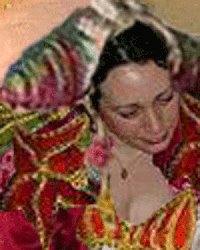
Virginia City---an old West mining town overlooking a high desert valley. Quaint and touristy. A place of Sunday church bells and t-shirt shops. And, last weekend, host to the Society of Children's Book Writers and Illustrators Nevada chapter October conference. I came, I saw, I spoke, I critiqued. Here's the tally:
(1) 45 minute speech 'The Picturebook Process: From Manuscript to Bound Book
(9) 20 minute manuscript critiques
(1) 1 1/2 hour seminar featuring 'After the First Draft: 12 steps to get your manuscript ready for submission'
(2) panel discussions
It was a busy weekend.
The dozen or so members of the faculty stayed at the St Mary's Art Center, a former late 19th century hospital said to be haunted by a benevolent nun.

Saturday night, a few of us brave sorts went looking for her in the attic, only to be greeted by a mysteriously positioned chair:

There must have been around 300 people attending the conference, which started bright and early Saturday morning with an inspiring talk by Bruce Hale, author of the funny kid-noir Chet Gecko series. We'd had a nice talk the night before about our mutual admiration for Raymond Chandler and Dashiell Hammett (his favorite: The Big Sleep; mine: The Dain Curse; mutual favorite: The Long Goodbye---we both agreed the 1970's Altman movie was disappointing). Bruce's Saturday morning talk featured lots of four-letter words. Surprising in a children's author, really. No no no, actually, the four letter words were (not in the order he presented them): RISK, LUCK, PUSH, and a few others, useful to an author's evolution. The "risk" section, I believe, featured Bruce in a powder blue leisure suit looking quite Mr. Seventies. Now showing that photo, right there, was risky indeed. A very brave author, Mr. Hale.
Next came the lovely Houghton Mifflin editor Julia Richardson with wise words and tips for unpublished authors. I then shuffled up to do my little spiel. I couldn't find my notes when I packed my suitcase Thursday night so I had to wing it and go by the bullets on my Powerpoint presentation. Amazingly enough, I survived. Last of the Keynote gang was a young agent from New York's Donald Maass Agency, Stephen Barbara, who was funny, informative, and charmingly honest in his speech about the place of agents in the industry. He did an interesting on-the-spot survey about how people chose the books they bought. Funny how few of them had to do with advertising---the top two seemed to be 1) The book was by a favorite author 2) Someone had recommended it.
The afternoon was devoted to picturebook critiques (for me) and a selection of seminars, including ones by Ellen Hopkins, Suzanne Williams (our hard-working Regional Adviser), Susan Hart Linquist, Jim Averbeck, novelist and SCBWI president Stephen Mooser (who turns out to be a very lucky person to have standing next to you if you play the slot machines at the Reno Airport), Barbara Marquand, and Teri Farley.
That night, we all gathered at the historic Fourth Ward School for a reading of children's literature and storytelling by a member of the Paiute Indian tribe.

Back at the Art Center, much chocolate was eaten and wine consumed. A dozen sugar high, half-drunk children's book authors and illustrators is not a pretty sight. I dragged myself off to bed feeling fat and slightly dizzy.
I woke up the next morning to this:
 I hadn't been up to see the dawn since I'd caught a seven o'clock flight to Paris four years ago. Sunrise on the high desert has a very particular light---it's a light that makes you feel bright and hopeful. I got dressed quickly as I could and set off for a walk to one of the old cemeteries.
I hadn't been up to see the dawn since I'd caught a seven o'clock flight to Paris four years ago. Sunrise on the high desert has a very particular light---it's a light that makes you feel bright and hopeful. I got dressed quickly as I could and set off for a walk to one of the old cemeteries.I came across some interesting headstones in the Catholic cemetery:

Back at the art center, it was time for more critiques with a break at lunch for a quick walk into town:


Mansion on Millionaire's Row Abandoned bank safe

The main street
After my afternoon seminar, it was time to say a quick goodbye to everyone and rush off to the airport with Mr. Mooser and Barbara Marquand.
Goodbye 'o shining Virginia City!














